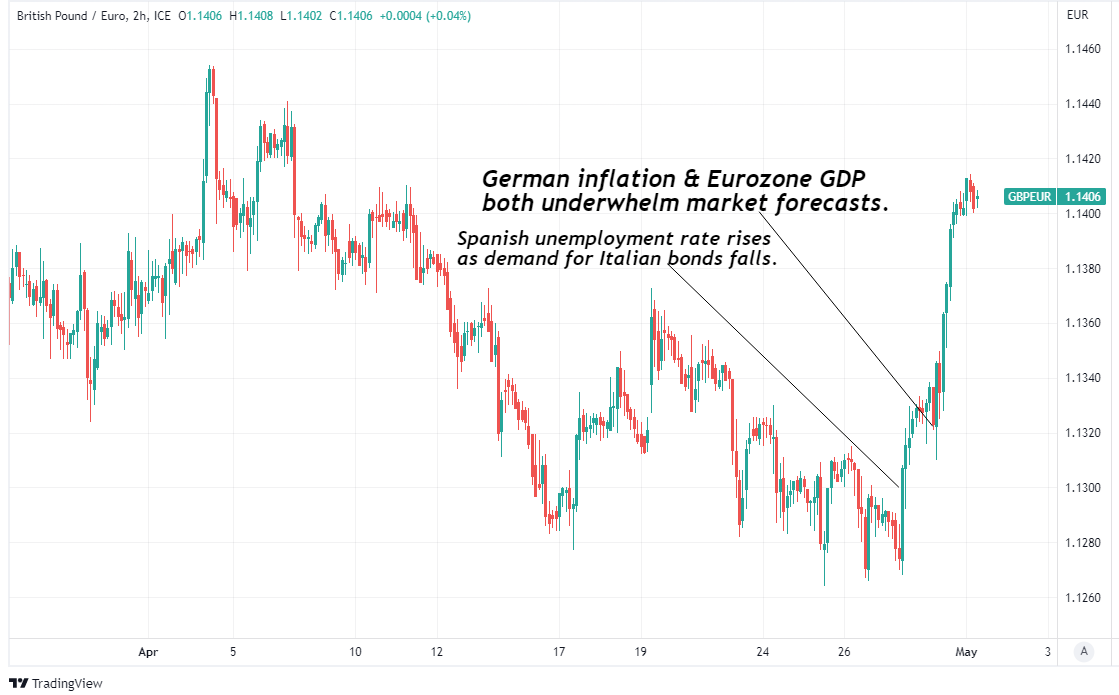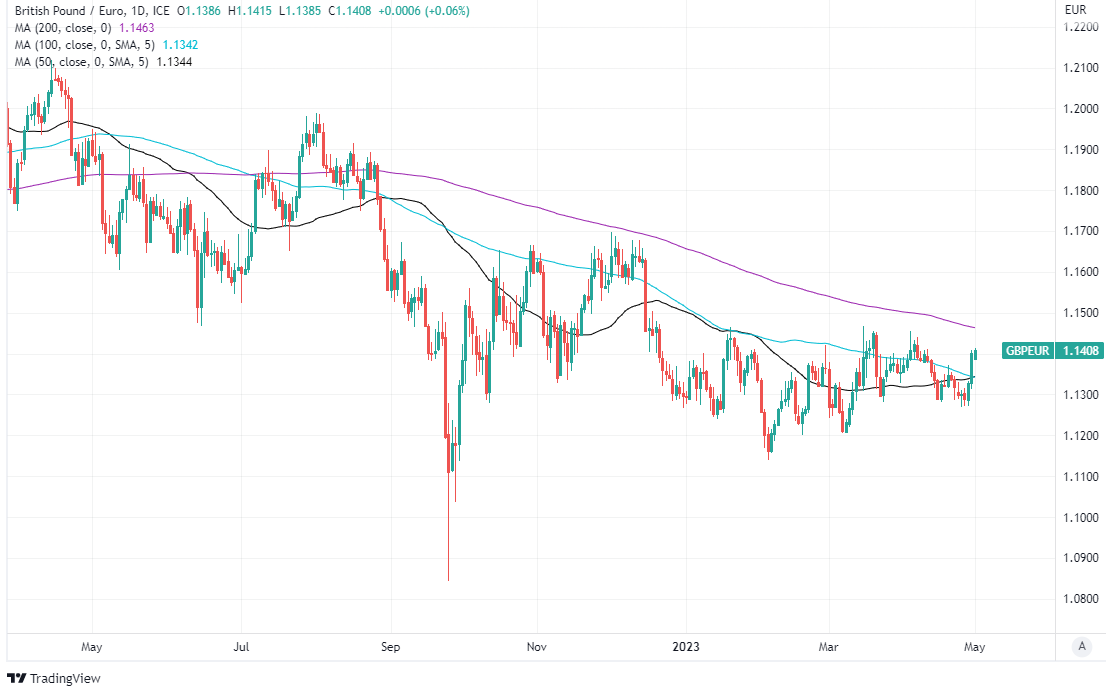GBP/EUR Week Ahead Forecast: ECB Could Help Recovery
- GBP/EUR on front foot into EU CPI & ECB decision
- Could have scope to set new 2023 highs short-term
- Upper end of 1.1377-1.1438 range could be broken
- If ECB takes wait-and-see approach to rate outlook

Image © Adobe Images
The Pound to Euro exchange rate approached the year's highs last week and could attempt to reach its best levels since December 2022 if Euro area inflation ebbs again and the European Central Bank (ECB) adopts a less hawkish monetary policy stance in the days ahead.
Pound Sterling climbed back above 1.14 against the European single currency ahead of the weekend when Euro Area economic growth came in on the soft side of expectations for the opening quarter just after Destatis figures suggested a cooling of German inflation pressures last month.
To the extent that Friday's prices data was indicative of what can be expected from the Euro Area figures out on Tuesday this week then GBP/EUR could be in with a shot at extending its tentative rally, and even more so if this data is reflected in the ECB's policy stance on Thursday.
"With European FX leading the way, and the market sensing that the BoE will need to change its tone, Sterling has been one of the best-performing currencies of late," writes Michael Cahill, a G10 FX strategist at Goldman Sachs, in a Friday research briefing.
"While the fundamentals have improved substantially on the activity side, and we think warrant a change in policy tactics, we are mindful that the BoE has so far demonstrated more patience than the market is pricing," Cahill adds.
 Above: Pound to Euro rate shown at 2-hour intervals. Click image for closer inspection.
Above: Pound to Euro rate shown at 2-hour intervals. Click image for closer inspection.
Cahill and colleagues said on Friday that for the outlook to improve further in favour of Sterling, the Bank of England (BoE) would likely need to adopt a more 'hawkish' policy position and take a more aggressive approach toward inflation in next week's monetary policy decision.
That, and a sparsely populated UK economic calendar for this week, suggests the Pound to Euro rate would likely need either inflation or the European Central Bank to underwhelm the market on the Euro side this Tuesday or Thursday in order to build further on its nascent recovery.
GBP/EUR Forecasts Q2 2023Period: Q2 2023 Onwards |
"National releases of April inflation suggest that euro area HICP inflation could have slightly decelerated to 6.8% y/y from 6.9% m/m in March," writes Silvia Ardagne, chief Europe economist at Barclays, in a Friday research briefing.
"The relative weakness of euro area GDP could play in favour of the supporters of a smaller hike, as well as softer-than-expected core inflation, if confirmed next week," Ardagne and colleagues say.
Above: Quantitative model estimates of ranges for selected pairs this week. Source Pound Sterling Live. (If you are looking to protect or boost your international payment budget you could consider securing today's rate for use in the future, or set an order for your ideal rate when it is achieved, more information can be found here.)
The consensus among economists suggests Tuesday's data will show that Europe's overall inflation rate edged higher from 6.9% to 7% in April but also looks for the more important core inflation rate to edge lower from 5.7% to 5.6% in what might be a supportive outcome for GBP/EUR.
Everything depends on how the data is interpreted by the ECB Governing Council this Thursday, however, the Pound could benefit at the expense of the Euro if softer prices data and last week's underwhelming GDP data leads the bank to remain tightlipped about the outlook for interest rates beyond Thursday.
That's a possibility and is something that would potentially weigh on the Euro in light of implied market expectations for at least two further increases in borrowing costs taking the once-negative ECB deposit rate to 3.75% later this year.
"Heading into next week’s policy meeting, the euro-zone rate market is expecting the ECB to deliver a 25bps rate hike, and then to keep hiking rates through the rest of this year until the deposit rate reaches a peak of 3.75% by September," says Lee Hardman, a senior currency analyst at MUFG.
"The ECB’s aggressive rate hiking cycle since last summer has resulted in yield spreads narrowing significantly between the eurozone and the rest of the G10 bond markets on average to levels not seen for over a decade. Next week’s ECB policy update is unlikely to materially alter the more supportive yield spread set up for the EUR," Hardman and colleagues write in a Friday research briefing.
Above: Pound to Euro rate shown at daily intervals with selected moving averages indicating possible areas of technical support and resistance. Click image for closer inspection.


